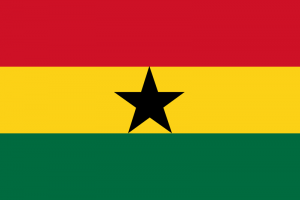Difference between revisions of "Language/Twi/Grammar/Possessive-Pronouns"
m (Quick edit) |
m (Quick edit) |
||
| Line 1: | Line 1: | ||
<span pgnav> | |||
{| class="wikitable pg_template_nav" | |||
|[[Language/Twi/Grammar/Personal-Pronouns|◀️ Personal Pronouns — Previous Lesson]] | |||
|[[Language/Twi/Vocabulary/Greetings-and-Salutations|Next Lesson — Greetings and Salutations ▶️]] | |||
|} | |||
</span> | |||
{{Twi-Page-Top}} | {{Twi-Page-Top}} | ||
| Line 170: | Line 177: | ||
{{Twi-Page-Bottom}} | {{Twi-Page-Bottom}} | ||
<span links></span> | <span links></span> | ||
<span pgnav> | |||
{| class="wikitable pg_template_nav" | |||
|[[Language/Twi/Grammar/Personal-Pronouns|◀️ Personal Pronouns — Previous Lesson]] | |||
|[[Language/Twi/Vocabulary/Greetings-and-Salutations|Next Lesson — Greetings and Salutations ▶️]] | |||
|} | |||
</span> | |||
Revision as of 22:16, 2 April 2023
| ◀️ Personal Pronouns — Previous Lesson | Next Lesson — Greetings and Salutations ▶️ |
Introduction to Twi Possessive Pronouns
In Twi, possessive pronouns are used to indicate possession or ownership. Possessive pronouns are used to replace nouns to show who owns what. For instance, "my book" can be replaced with "mine." In this lesson, you will learn about Twi possessive pronouns and how to use them in daily conversations.
Basic Forms of Twi Possessive Pronouns
| Twi | Pronunciation | English |
|---|---|---|
| me | /me/ | my |
| w'o | /wo/ | your (singular) |
| w'ona | /wóːnà/ | his/her/its |
| yɛn | /yên/ | our |
| wɔn | /wɔ́n/ | their |
Usage of Twi Possessive Pronouns
To use possessive pronouns in Twi, they typically come before the noun they modify. For example,
- me nsa - my book
- w'o kasa - your chair
- w'ona kunu - his/her/its cup
- yɛn nhoma - our cars
- wɔn afe - their house
However, if the possessive pronoun follows the noun, it implies emphasis. For example,
- nsa me - MY book
- kasa w'o - YOUR chair
- kunu w'ona - HIS/HER/ITS cup
- nhoma yɛn - OUR cars
- afe wɔn - THEIR house
Notice how the stress and intonation are used to emphasize possession by placing the possessive pronouns after the noun.
Demonstrative Pronouns
Demonstrative pronouns in Twi show which thing or person is referred to. They are used to indicate distance or closeness. The table below shows the basic forms of demonstrative pronouns in Twi.
| Twi | Pronunciation | English |
|---|---|---|
| wɔnani | /wɔ́nánì/ | this, these |
| wɔnade | /wɔ́nàdé/ | that, those |
Just like possessive pronouns, demonstrative pronouns in Twi come before the noun.
Interrogative Pronouns
Interrogative pronouns in Twi are used to ask questions. They are used to ask about people, things, or time. The table below shows the basic forms of interrogative pronouns in Twi.
| Twi | Pronunciation | English |
|---|---|---|
| deɛn? | /déɛ́n/ | what? |
| bɔne? | /bɔ́nè/ | who? |
| efi? | /éfí/ | when? |
Practice Example
Imagine you are visiting a friend's home in Ghana, and you notice that your friend's sister has a beautiful dress. To ask her about it, you can use Twi interrogative pronouns and possessive pronouns in a sentence like the following:
- Kwame: "Bɔne nti adeɛ te sɛn?"* (Who made your dress?)
- Ama: "Madam Akuafoɔ, ɔno wɔ me deɛ sɛn."* (Madam Akuafoɔ, her shop made my dress.)
Conclusion
Understanding Twi possessive pronouns, demonstrative pronouns, and interrogative pronouns are essential to mastering the Twi language. By using these pronouns appropriately, you can accurately convey your message in daily conversations. Keep practicing and integrating the pronouns as you continue on your Twi language journey.
Upon wrapping up this lesson, take a look at these related pages: Give your Opinion & Gender.
Videos
Twi Possessive Adjectives | Twi Grammar | Learn Akan
Learn Twi with Opoku | Twi Grammar 2 | Twi possessive pronouns
Other Lessons
- Subject Verb Object Order
- Gender
- Questions
- Past Tense
- Personal Pronouns
- Using Conjunctions
- Plurals
- Descriptive Adjectives
- Give your Opinion
Sources
- Possessive Pronouns in Twi | Twi Grammar | LEARNAKAN
- Twi Possessive Adjectives | Twi Grammar | LEARNAKAN
| ◀️ Personal Pronouns — Previous Lesson | Next Lesson — Greetings and Salutations ▶️ |
